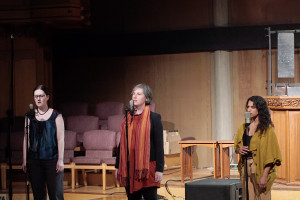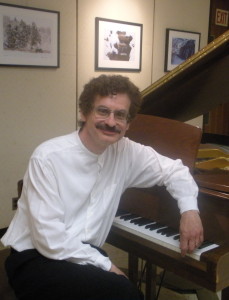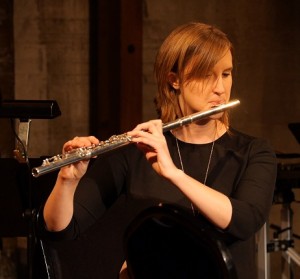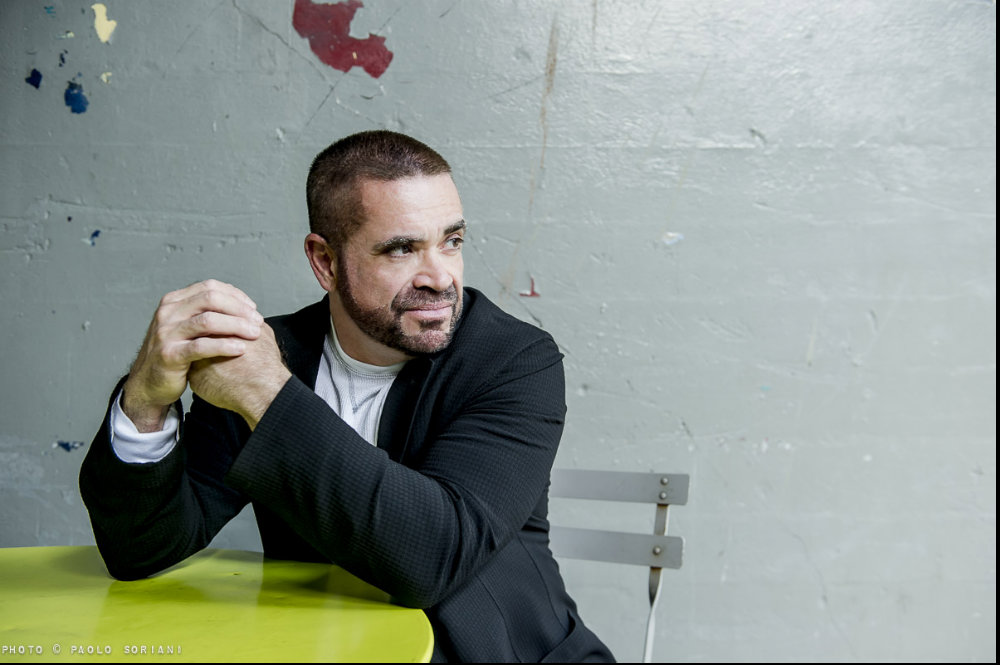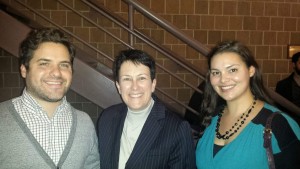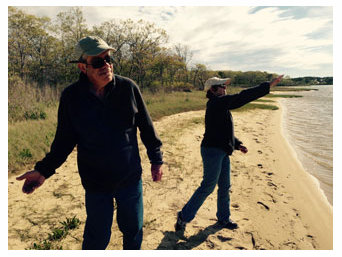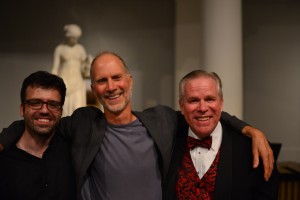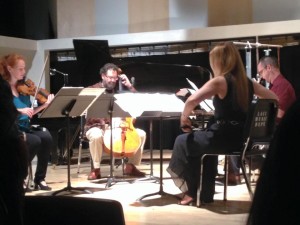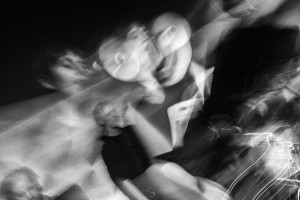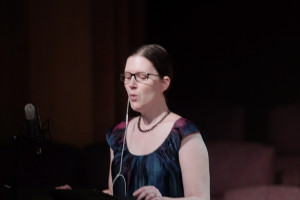 On Saturday, November 21, 2015 People Inside Electronics presented the contemporary vocal chamber ensemble Accordant Commons in a concert at the Neighborhood Church in Pasadena. A Saturday night crowd of new music enthusiasts gathered to hear an evening of vocal music combined with electronics.
On Saturday, November 21, 2015 People Inside Electronics presented the contemporary vocal chamber ensemble Accordant Commons in a concert at the Neighborhood Church in Pasadena. A Saturday night crowd of new music enthusiasts gathered to hear an evening of vocal music combined with electronics.
The first piece presented, “those remaining words in nuance”, by Chen-Hui Jen featured soprano Stephanie Aston who began with a soft sustained pitch, accompanied by electronics fed through speakers on the stage. More pure tones and vocalizing followed and this gave a vivid sense of multiple voices – Ms. Aston sang along in harmony and this was quite effective. “those remaining words in nuance” is based on two fragments of text in two different languages -Mandarin Chinese and English – with deconstructed phenomes from each used as vocalise materials The electronic sounds were derived from voice and synthesis of voices.
As the piece progressed, the electronics produced cooler, remote-sounding tones and the blending with the solo voice added a familiar human element. That the overall feeling was one of a curious strangeness, but free of anxiety. Ms. Aston skillfully found her pitches quite accurately and sang with careful attention to the often wide dynamic changes. Towards the end the electronics emitted a series of chirps and whistles that could have been whales calling and this produced a warm, natural feeling that drifted off to a whisper at the finish. The sense of ensemble in “those remaining words in nuance” is most impressive and provides a new benchmark in the artful combination of electronics and the human voice.
Improvisation was next and this featured the three voices of Accordant Commons: Stephanie Aston, Odeya Nini and Argenta Walther. This began with whistling and breathy sounds and was answered with low moans from the electronics. As the piece progressed soft, sustained tones from the singers mixed with tweets and calls in the electronics, building in volume. A series of falling pitches followed that morphed into thunder and a sharp shriek into the microphone faded into a low roar. There was an exotic and isolated feel to this, as if we were hearing the sounds of some foreign fauna in a remote canyon or valley. By the finish, more breathy sounds and low sighs drifted off into a thunderous background while squeaks and squeals added to the echoing ambiance. Improvisation takes us on a journey to a unique, primal landscape crafted from voice and sound.
